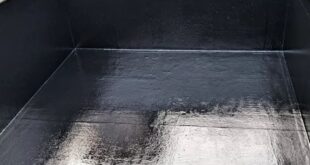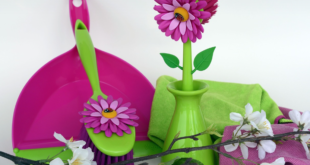Data shows that the average UK home is getting smaller, and has been since the noughties. Industrious as ever though, Brits around the country have been coming up with inventive ways to make their homes look – and feel – bright and spacious.
Your household items and decoration are what makes a house feel like a home. Putting your own stamp on a property is an amazing feeling – but the space we have to work with is decreasing, making it more difficult for people to make their dream home reality.
So, with everyone paying more for less space, how can we keep our homes looking and feeling great? The fitted wardrobe specialists at Sliding Door Wardrobe Company have put together some top tips on how best to maximise space.
Key findings
- Current social home waiting list of over 1.2 million households has led to pressure for more homes to be built quickly – leading to smaller homes.
- The minimum floor area of a new build should be at least 37m sq – this still does not allow much room for storage.
- The average total floor area of a standard UK house stands at 87.9m sq, as of 2021. This is a 16% decrease in space compared to the previous five years.
- There are various ways to maximise space within your home, from fitted wardrobes to under floor storage.
Just how small are UK homes?
Given the rate at which UK homes are being built, it’s hardly surprising that the size of homes are getting smaller. The current waiting list to be allocated social housing currently stands at 1.2 million households, a figure that has risen by 5% between 2021 and 2023.
With families up and down the country placed on waiting lists to be given social housing, developers are doing everything they can to build as many homes as possible in small spaces, cramming hundreds of petite homes into newbuild estates.
There are limits to how small rooms can be in the UK, with the minimum bedroom size for two people coming in at 10.22m sq for homes of multiple occupation. The nationally described space standard says the minimum floor area of any new build home should be at least 37m sq.
However, when the size of the furniture, fitted units and other essentials are taken into account, this size layout does not leave a lot of room for storage. Further issues on space might arise if your landlord limits changes to your living space. For instance, it may be written into your contract that you cannot mark the walls with hooks for hanging storage space.
As of 2021, the average total floor area of a standard UK home – available to buy – stood at 87.9m2. In the five years between 2016 and 2021, the size of a UK home decreased by 16%, which could amount to the loss of an entire room!
How to maximise your space
If you live in a council house or rented property and are restricted by your landlord’s rules, try the below steps to maximise your space without permanent change to your property.
Add slim storage units to your hallway or corridor
Thin corridors offer a wealth of often unused space within a home. Try popping a slim storage unit flush against the wall and filling it with shoes, coats or bags for easy access on your way out. This tip also minimises clutter, making your hallways feel more spacious without minimising walkway space too much. A mirror can also be used in thin corridors to bounce light around the area and give the illusion of a larger space.
Pop storage boxes into your bookcase
Small storage boxes can sit alongside your books in your bookcase, allowing for objects such as kids’ toys, remote controls and even blankets and throw cushions to be stored away neatly. Clearing these items away when not in use minimises clutter in your living room or bedroom, giving the illusion of a clearer, more spacious area.
Invest in a hanging rack
Hanging drying racks are great for saving space and can be used all over the home. Hang one at the window with your laundry – not only will this dry your clothes faster when it’s nice weather, it’s a much better alternative to the bulky, freestanding drying racks. You can also hang trailing plants from these racks, giving the room a pop of colour and your plants access to sunshine. Mount a hanging drying rack over your sink as a great place to drain freshly washed plates, glasses and cutlery without the need for extra surface space.
Space-saving tips for home-owners
If your landlord is more accommodating or you own your home, you can try these more adventurous space saving options:
Add a fitted wardrobe
Fitted and sliding door wardrobes are a great way to maximise space in your bedroom or study. These storage spaces fit snugly into the room and can even be specially manufactured to fit into awkward spaces or areas with sloping ceilings. The perfect solution for storing clothes, fitted wardrobes save far more space than the average bulky, freestanding wardrobe. If you have a slightly larger space, a sliding wardrobe can even be utilised as a small study space, the door hiding a desk, chair and work materials until they are needed.
Try a mirrored cupboard
Instead of mounting a normal mirror on your wall, try one which features a built-in cupboard. Combining two useful features in one, these cupboards can hide shoes, clothes and makeup from sight, whilst also functioning as a mirror in your bedroom, bathroom or living space. These mirrored cupboards are usually slimmer than a standard wardrobe or mirrored cabinet and are also aesthetically pleasing and simple enough to work with any interior design.
Fit storage under your floorboards
Build a false layer into your flooring and utilise the space below your feet! Add small hinges on the underside of the floorboards and cut small holes into the wood as a handhold. These cubby holes are perfect for storing larger items which aren’t needed every day, like bags or spare bedding. Cover over the floorboards with a large, decorative rug which can be pulled back for easy access when needed. You can even stand furniture on top of the storage area to further disguise the space!
Although houses (whether privately, council or owner owned) appear to be shrinking in size, there are plenty of space saving tips you can try to maximise the living space you do have and make your house feel like a home.
The savvier your storage, the better – sometimes we just need a little inspiration to help bring our dream homes to life.
 Homeowners Club If you are one of the 15 million homeowners in the UK, the free to join online Homeowners Club is for you.
Homeowners Club If you are one of the 15 million homeowners in the UK, the free to join online Homeowners Club is for you.








